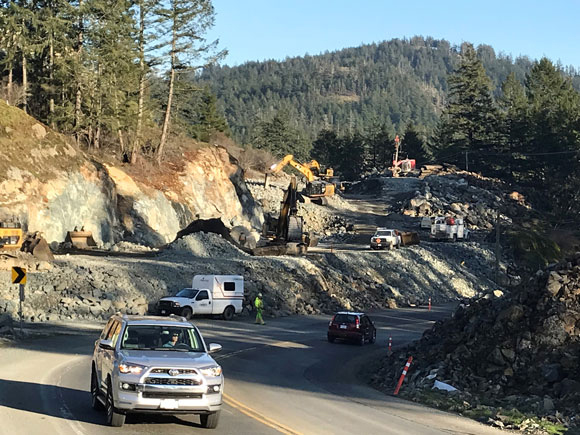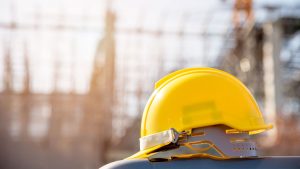On time and on budget – how often does one hear this phrase in construction? Well, when it comes to the upgrades of a 1.5-kilometre section of Vancouver Island’s Highway 14, that started in November 2020, they appear to be hitting those important benchmarks.
Fall 2022 is the projected finish date for the $36-million project.
“It’s going well,” said Kyle Webb, civil division manager with Windley Contracting, the Nanaimo company awarded the contract for the project. “We’re working well with all the stakeholders.”
Those include BC Transit, which operates an important bus route between Sooke and Victoria, utility companies, the district of Sooke, the T’Sou-ke First Nation, property owners and commuters.
Work was 50 percent complete by early February,” said Mike Pearson, a civil engineer and the Vancouver Island district manager with B.C.’s Ministry of Transportation and Infrastructure (MOTI).
In 2007, roughly 13,000 vehicles per day travelled the Highway 14 corridor. By 2017, more than 16,000 vehicles moved along the narrow, winding two-lane road. Numbers are significantly higher today, due to expansive growth in the Sooke area.
Unlike the Prairies, where numerous travel options exist, when a section of Highway 14 is closed, due to a crash or weather-caused event, motorists can face delays of up to six hours or more because there are few or no detours.
The project’s highlight is the building of four lanes, including the overpass, and concrete median dividers.
Other significant items include a pedestrian underpass, new road access/connection for roads that join Highway 14, improved road alignment, new bus bays, a new 50-stall park-and-ride space, larger culverts to assist animal crossings and added streetlights in what can be a very dark, wet stretch of road.
A big pre-completion landmark will occur around April/May when the two-lane overpass will be ready for vehicles. Two-way traffic will travel on the new section, which will free up work area. “It gives us the opportunity to build the other two lanes,” Webb said.
Pearson notes that the Windley crew has worked very effectively in the challenging space. “It’s a constrained site. Blasting has to be done without impacting traffic,” he said.
Night work is regularly scheduled. As well, traffic management is crucial on a road where during rush hours, everything from fully loaded logging trucks to scooters, are in a non-stop flow. Staging has been done to minimize the impact to traffic. “Windley has done a great job to minimize delays,” Pearson said.
But even before construction started late in 2020, MOTI had to work with six property owners along the proposed route; four sold portions of their land and two others sold their homes and property, Pearson said.
Vegetation clearing was necessary and many trees, including old growth evergreens, were taken down. The T’Sou-ke Nation, via a project agreement, got some of the trees while the remainder were sold on the open market, Pearson said.
Utility infrastructure (hydro, phone, cable) also had to be relocated.
Thanks to the rocky nature of Vancouver Island, a lot of blasting was necessary.
“We use the blast rock on site as much as we can,” Pearson said. “But there’s more rock than we need.”
Weather extremes have also played a role. The record-setting dry summer of 2021 meant Windley crews had to be very careful not to spark a fire.
“We had to put special measures in place,” Webb said.
Then came the November record-setting rains and December’s snow.
“We managed it. It didn’t affect us too much,” he added.
While exact numbers aren’t available, Pearson said well over 100 employees, including Windley and its sub-contractors, have been employed on the project.
This current work, on a small section Highway 14, is one step in what may be the eventual four-laning of the total route from Langford to Sooke. But there is not a definite schedule, with Pearson saying the work will be undertaken over “a long period of time.”





Recent Comments
comments for this post are closed